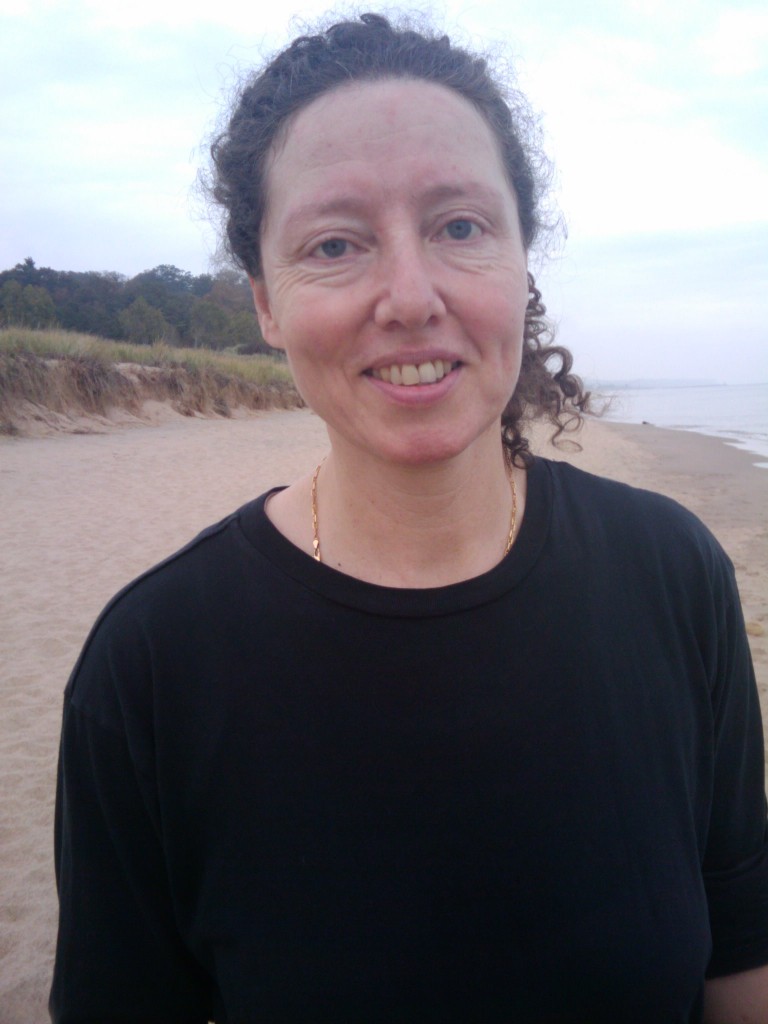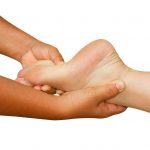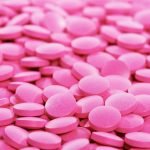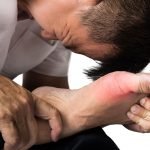The Energetics of Self-Care: Developing a Relationship with the Vis Medicatrix Naturae
Elizabeth Sutherland, ND
It can be a challenge to be consistently empathetic and deeply caring as we juggle the various pressures of life and practice. Physician burnout is an increasingly visible problem in the allopathic world.1,2 Among naturopathic doctors I have worked with over the years, burnout and fatigue can, sadly, take the form of losing touch with what drew us to practice naturopathic medicine in the first place. Sometimes, to try to avoid feeling overwhelmed and fatigued, we may imagine a boundary between ourselves and our patients, or a sense of cutting-off and being unattached. I have not found this to be a useful self-care method in the long term. It can slowly slip into feeling like not being attached to caring, rather than not being attached to a specific goal. In fact, we sometimes become more stuck on a particular patient outcome when, in self-protection, we try to detach from caring. If we think of compassion and empathy from a purely emotional or mental place, then we are giving from our good intentions, which can take a toll on our own energetic reserves. The principles of naturopathic medicine, however, offer us profound guidance on how to continually nourish ourselves and regularly return to the heart of the medicine.
We Begin with the Vis Medicatrix Naturae
The Vis Medicatrix Naturae (VMN) holds pride of place in our worldview as the first principle of naturopathic medicine. It is understood as the Healing Power of Nature, but that interpretation subtly places it outside of us, quite literally, when we imagine it means that being out in nature is healthy, or that using natural products is good (both undeniably true), but forget that we and nature are inseparable. Many systems of medicine, Chinese medicine notable among them, consider human beings as intrinsically connected with the cosmos. These systems offer several forms of practice (eg, qi gong, tai chi) to help us tangibly experience the reality of the ongoing exchange of energy between ourselves and life itself, whenever we bring our awareness to this process. In my private practice, I engage with my patient’s whole body wisdom. I understand whole-body wisdom as a manifestation of the VMN within us. I believe the fundamental reason that being in nature is healing is that on some level it reminds us, by resonance, that we belong to something greater than our individual selves.
The Energetics of Stress
The tools and techniques of mind-body medicine can sometimes feel like ways to control the mind or ways of using the mind to control the body. An insidious issue when we use this approach for self-care is that the “self” that is applying the mind-body technique is the same “self” that perceives it has a problem that needs fixing. As has been famously noted before, it is virtually impossible to sustainably shift to a new way of being when we attempt to solve a problem with the same level of consciousness that created it. Our awareness is limited to our individual perception and we forget that we are actually participating in all creation.
Feelings, emotions, and thoughts are all energy states, and energetic states are self-generating. Negative-generative attractor patterns get stuck in our bodies. Positive-generative attractor patterns are fluid, and help what is stuck get unstuck. Particular emotions tend to get stuck in body memory and create a certain chemistry. Fears, doubts, anxiety, and insecurities crystallize in body memory as energy bound in an overly constricted pattern that manifests as tensions within us. Feelings such as joy and happiness, on the other hand, are fluid. This is not to say some emotions are bad and others are good, but rather to illustrate why, for example, when people are depressed, it is so difficult for them to imagine ever not feeling that way. Energy is always moving, but it can get stuck in a pattern of movement or restrictive structure. Anxiety, for example, can feel like a diffuse experience, but it is actually a highly structured state. This tendency toward structure is a natural aspect of life. When we try hard to shift these patterns with our mind or will, however, we can often end up even more entrenched. We need help from a different level of consciousness.
The Energetics of Self-Care
For the past few years in my clinical practice, I have used a specialized system of body-based awareness exercises.3 The purpose of these exercises is to help people truly serve themselves and others through the understanding that comes from connecting with and opening to the creative power of life itself. In the system of naturopathic medicine, we can identify the creative power of life itself as the Vis Medicatrix Naturae. A foundational tenet of this body-based awareness system is the radical concept of “me-first healing.” It is not about being selfish. Instead, it is about recognizing that it is our responsibility to nourish ourselves first, so that we can be fully present and giving from overflow in the treatment room, rather than from our finite, personal resources. When we give from our personal intentions, however careful we are, we are giving from our personal resources.
The practice is, in a sense, about starting with our desired outcome, starting from awareness of wholeness, and simply being in the presence of that flow within us. Embodying wholeness is both the goal of healing and the means to it. The first connection we make is always with our own wholeness, not with the other person, and then from that overflow we cannot help but be fully present and in compassionate acknowledgment of others. Our giving from overflow can then act as an invitation, a reminder through resonance, without needing to speak any words about what we’re doing, for that other person to connect with his or her wholeness also. It is very hard in this state to lose oneself or take on another person’s issues, and much easier to uplift that person. This kind of self-care is a commitment to serve, a commitment to the medicine and our patients, by taking care of ourselves first. The first step is experiencing, or at least entertaining the notion, that we are all part of a vast, interconnected dynamic system. A deeper understanding of the VMN helps guide us in that direction.
Self-Care Steps
The steps in the energetics of self-care can be described as:
- Connection: Awareness rooted in our own body first; knowing our body as an instrument of connection with life itself
- Alignment: Opening to connection with the power of life itself, even if we think we are imagining it; allowing ourselves to receive unconditionally from this source, which is a healing resource all around us and within us
- Flow: We are filled with the power that animates all life. We become one, interactive field/process without losing our individual identity, aligned with the deepest awareness of self. Wholeness serving wholeness.
Self-Care Practices for Before, During, and After Seeing Patients
The first connection is with ourselves. This starts in the body by, for example, becoming aware of the back of our heart center. From there, we connect with the creative power of life, the VMN, allowing, visualizing the energy of the universe pouring in. It can be helpful to imagine a bowl in the center of the chest, filling up and overflowing like a fountain. As we are immersed in that flow, we can imbue it with any quality we feel is needed: love, compassion, mercy toward oneself. These exercises are so simple and powerful that we can do them while we are with our patients. We can experience wholeness within and giving from overflow at the same time as we analyze symptoms and formulate diagnoses and treatment protocols. In fact, perceiving from our state of wholeness can make us proceed with more insight and sensitivity.
There are 2 aspects to the energetics of self-care: clearing and filling up. Practices for filling up can be done before and during a patient visit; practices for clearing or emptying may be important in between sessions and at the end of the day. Because of the nature of flow and structure, if we don’t also clear, then filling up can sometimes increase the intensity of what the energy finds there, that is, our own stress patterns. For both kinds of exercises, the practice of awareness is key. The awareness that I am being; I am experiencing the life of life itself in my own particular form. Not so much going to a place of wholeness, but the realization that wholeness is a state of perception. In my experience, this is the only way to take self-care to a deep, sustainable level.
Who Can Benefit from This Self-Care Practice?
Engaging with the energetics of self-care is for every practitioner with whom it resonates. You don’t have to be a practitioner of energy medicine or mind-body medicine. Practitioners who do work with energy often describe themselves as a vessel or conduit. It is one thing to allow energy through us, and another thing to become aware of it filling us up and overflowing as a kind of side benefit for others. It is possible to practice mind-body medicine from a superficial place – we might ask all the right questions but not from a place of compassion. It is also possible to connect with a patient in a profoundly holistic way without specifically performing a mind-body medicine intake. The difference is the location of our awareness. A new model of health and well-being can be understood as the practitioner connecting with the source of wholeness first, embodying that, and evoking by resonance that connection within another person, whole-being to whole-being.
Specific Relevance for Naturopathic Physicians
We are guided in self-care by our interpretation of the principles of naturopathic medicine. Eating well and exercising, for example, are obviously important to do, but for deeper nourishment let’s return to the principles with a different understanding. Energetic self-care can be thought of as movement in a direction that’s more about being than doing to; for example, being in a state of wholeness, ourselves, invokes the experience of that state in our patients without our imposing anything on them. This is not a passive or avoidance stance; it actually allows for the most loving and appropriate responses in any circumstances. The elegant principles of naturopathic medicine can be interpreted and experienced on a living spectrum of doing and being; that is, our understanding of them can evolve as we become more aware of our connection with life itself.
Here is a suggestion of how we might experience the principles when viewed more and more from a perspective of being:
- Vis medicatrix naturae: The heart of the medicine – our experience of the reality and meaning of our interconnectedness continually deepens
- First do no harm: Cultivate our own state of being to align with life itself/intrinsic wholeness and be present and give from that overflow
- Treat the cause: Give material and energy medicine from that state of deep alignment within ourselves
- Treat the whole person: Evoke, through our own alignment, our patients’ connection with intrinsic wholeness as the catalyst for transformation of their own body, mind, and spirit
- Doctor as teacher: Doctor as medicine
- Prevention is the best medicine: Self-healing as on-going transformation from within
 Elizabeth Sutherland, ND, graduated from NCNM in 1997. She studied the doctor-patient relationship and its impact on patient outcomes through NIH-funded post-graduate research fellowships at the KPNW Center for Health Research and the University of Arizona, College of Medicine, Complementary and Alternative Medicine Research Training Program. In 2006 she redesigned the mind-body medicine curriculum at NCNM, and taught “Cultivation of the Practitioner,” for several years. She is currently chair of the NCNM IRB, and is in private practice in Portland, Oregon. She also teaches whole-heart connection practices, and is available for workshops or 1-on-1 consultations in person or by Skype.
Elizabeth Sutherland, ND, graduated from NCNM in 1997. She studied the doctor-patient relationship and its impact on patient outcomes through NIH-funded post-graduate research fellowships at the KPNW Center for Health Research and the University of Arizona, College of Medicine, Complementary and Alternative Medicine Research Training Program. In 2006 she redesigned the mind-body medicine curriculum at NCNM, and taught “Cultivation of the Practitioner,” for several years. She is currently chair of the NCNM IRB, and is in private practice in Portland, Oregon. She also teaches whole-heart connection practices, and is available for workshops or 1-on-1 consultations in person or by Skype.
References:
- Peckham C. Physician Burnout: It Just Keeps Getting Worse. January 26, 2015. Medscape Web site. http://www.medscape.com/viewarticle/838437. Accessed January 31, 2015.
- Scudder L, Shanafelt TD. Two Sides of the Physician Coin: Burnout and Well-being. February 9, 2015. Medscape Web site. http://www.medscape.com/viewarticle/839439. Accessed February 15, 2015.
- Perennial Medicine with Thea Elijah. Available at: http://perennialmedicine.com/. Accessed January 31, 2015.










